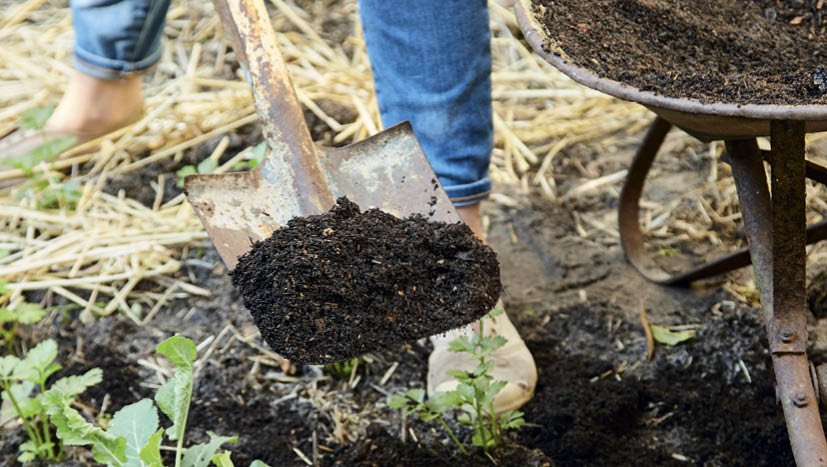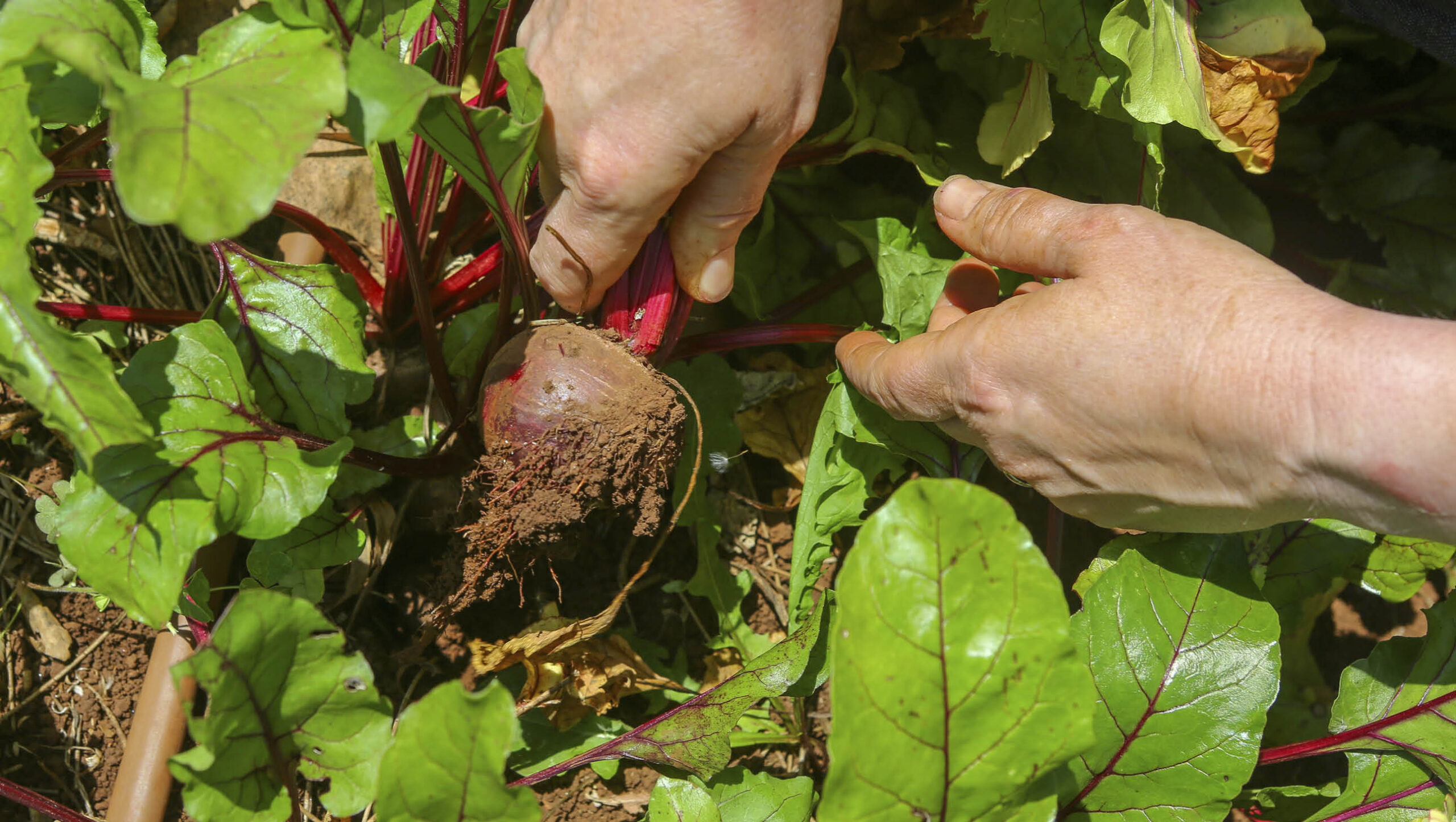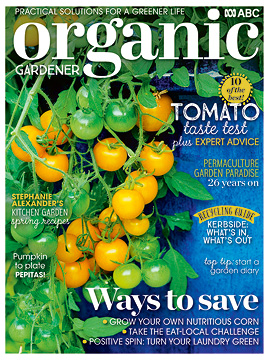Animal-free fertilisers
2019-06-15T02:18:58+10:00
Read about the fertiliser and soil amendment options for vegan gardeners or those who are looking for ways to reduce animal dependence.
As we develop more awareness about how our actions affect the Earth, many of us are thinking more deeply about the way we live. A small but growing group are vegans, who feel strongly that animals should not be killed or farmed for their meat or other products. Among those products are garden fertilisers such as manures and blood and bone. If you are vegan, going vegan, or just wanting to reduce dependence on animals, there are plenty of options to boost your garden plants and soil. Look for those that will contribute major nutrients such as nitrogen (N), phosphorus (P) and potassium (K) as well as micronutrients, which may only be needed in smaller amounts.
You will need to read up on the rates and frequency of applications, remembering that ‘more’ is not always ‘better’. Some are used on a regular basis, some rarely. Always water soil before and after applying any fertiliser.
Biochar
Biochar is charcoal made in the presence of low oxygen and can be used to help soil hold moisture and nutrients – especially good for nutrient-poor, acidic, sandy soils. It can
alkalise soil, so is less beneficial for high-pH soils. Some companies sell it commercially, but if you have a wood-fired stove or heater, you can make your own. Start by separating charcoal from ash using a coarse sieve, and crush larger pieces into smaller using a mash hammer in a strong tub.
How to use: Whether homemade or commercial, spread a 10mm layer over soil and mix it through the top. If you soak the biochar in a dilute liquid fertiliser before spreading, then the fertiliser will slowly release over a few weeks.
Compost
Compost is an essential part of an organic garden. You can make your own or buy some. Either way, the nutrients in compost will vary according to what you or the manufacturer make it with. For commercial compost, check that animal products such as manure or blood and bone are not in the ingredients list.
How to use: Add either bought or homemade, well-matured compost to your soil before planting to add nutrients as well as humus and microbes.

Above: Compost is an essential part of any garden.
Dolomite and lime
These are mostly used to change the pH of your soil. On a scale of 1–7, most plants prefer a soil pH of 6.5–7 (7 being neutral), allowing optimum uptake of nutrients. Lime can be used to contribute calcium and is the best choice if you also need to raise the pH of an acidic soil. Dolomite is a form of lime that is also good for ‘sweetening’ (raising the pH) of soil. It has less calcium than lime, but it also has magnesium.
As both will alkalise soil, use them only on acidic soils. How to use: Spread over the surface at a rate of approximately 200g per square metre.
Gypsum (Calcium sulphate)
Mostly used to help break up heavy clay soil, gypsum adds calcium without changing the soil’s pH, which is helpful in preventing diseases such as blossom end-rot in tomatoes.
How to use: Add gypsum to the soil at 1–2kg per square metre around two weeks before planting.
Green manures
Growing green manures is a low-input way to improve your soil fertility and organic-matter levels. Some can also be used to provide soil fumigation to clear pest nematodes. Look for seeds for crops suited to your climate.
How to use: For best results, cut down green-manure crops before they set seed, chop them up in situ and then dig them into the soil. Alternatively, just leave them on the surface and cover with mulch to break down slowly.
Kelp/seaweed
Extracts can be bought as liquid fertilisers or granulated. Although not a complete fertiliser (it is low in nitrogen and phosphorous), kelp contains valuable trace elements (iodine and potassium) as well as natural growth stimulants.
How to use: Use the liquid at transplanting and every two weeks as a tonic to encourage growth and give plants greater resistance to extremes of heat and cold. The granules can be sprinkled directly over soil, or dissolved. Some kelp fertilisers are combined with fish products, so make sure to read the label carefully.
Lucerne hay
Lucerne and alfalfa meal (the latter is shredded lucerne hay) come from the legume Medicago sativa, which contains good levels of nitrogen. Alfalfa meal contains a balance of nitrogen, phosphorus and potassium, as well as calcium, magnesium and other trace elements. Alfalfa also contains a natural growth hormone called Triacontanol, which can increase vegetable crop yields, as well as being great for roses.
How to use: Use as a light mulch on the surface of pots or soil, or dig meal into soil a few weeks before planting.
Rock dust
Made from finely ground rocks such as basalt, rock dust can add much-needed minerals to the soil. It doesn’t offer nutrients such as nitrogen, phosphorus and potassium, but it supplies trace elements such as calcium and iron.
How to use: Add a generous handful per square metre, both at planting and as a side dressing in autumn and spring.
Wood ash
If you have a wood fire, you can harvest ash and use it as a source of potassium or potash. It does alkalise soil, so only use if soil is acidic. The smaller the sticks and the more bark you burn, the more potash it will contain. Wood ash also contains calcium, which will help tomatoes, brassicas, apples and pears.
How to use: Sprinkle on top of the soil; amount depending on the acidity of soil and whether plants like an acidic soil.
Homemade liquid feeds
Liquid feeds provide an immediate benefit to plants and are useful during rapid growth stages, or when flowers and fruits are forming. If making homemade liquid feeds, ensure your container has a close-fitting lid to avoid insects breeding. Most commercial ‘complete’ liquid feeds are made from fish and other marine waste, so are not suitable for vegan growers. Generally, all homemade liquid feeds should be diluted to the colour of weak tea before using.
Compost tea
Mix compost, water and molasses in a suitable container (no lid required), and aerate with an aquarium bubbler for three days. Put the compost inside an old pillowcase to avoid blocking the bubbler. The aeration multiplies natural micro-organisms in the compost, creating a liquid that supplies nutrients and also improves soil microbial activity.
How to use: Use 1/2–1 part compost to 4 parts water and a teaspoon of molasses per 4L of tea.
Molasses
Although not a fertiliser, molasses promotes good microbial activity in the soil, so plants can take up nutrients better.
How to use: Mix 100ml of molasses with a small amount of hot water to dissolve it, then dilute with 10L of water and use once or twice per year by spraying over soil surface.
Nettle tea
Fill a bucket two-thirds with nettle leaves and add water. Cover and leave for 1–2 weeks.
How to use: When ready, strain, dilute and use to supply nitrogen, iron and potassium amongst other nutrients.
Weed teas
Fill a container loosely with fresh weeds, cover with water and a lid and use after 3 weeks. Leftover rotted weeds can be added to your compost, although perennial weeds may need extra soaking to ensure they can’t regrow.
How to use: Strain and dilute before using weekly on vegetables or less frequently on other plants.
More information:
Read up on pH and plants on our website at:
This article was first published in our Early Winter 2019 issue (OG 109) but it’s still filled with naturally great ideas for us all to use on our gardens. Head to Organic Gardener to find more back issues or subscribe and get the magazine delivered to your door!







